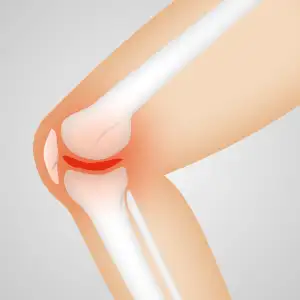Discover the Best Pain Pads for Knees to Relieve Discomfort: A Comprehensive Guide

Knee pain pads are specialized orthopedic devices designed to provide relief and support for individuals experiencing discomfort in the knee area. Whether caused by injury, arthritis, overuse, or other conditions, knee pain can significantly impact one's quality of life. Knee pain pads offer a non-invasive and convenient solution to help alleviate pain and improve mobility. These pads come in various shapes, sizes, and materials to cater to different needs and preferences. In this comprehensive guide, we will explore the benefits of using knee pain pads, the types available in the market, how to choose the right one for your specific condition, tips for effective usage, and more.
Benefits of Using Knee Pain Pads
**Benefits of Using Knee Pain Pads**
Knee pain pads offer various benefits to individuals suffering from knee discomfort. Firstly, they provide targeted compression and support to the knee joint, which can help reduce swelling and inflammation. This support can also improve stability during physical activities, preventing further strain or injury.
Moreover, knee pain pads often come with heating or cooling features that can help alleviate pain and promote healing. Heat therapy increases blood flow to the affected area, relaxing muscles and reducing stiffness. On the other hand, cold therapy can numb the area, reducing pain and inflammation.
Additionally, knee pain pads are typically lightweight and discreet, allowing users to wear them comfortably throughout the day without hindering movement. They are also adjustable to fit different sizes and shapes of knees, ensuring a personalized level of support for each individual's needs.
Overall, using knee pain pads can significantly enhance comfort, mobility, and overall well-being for those experiencing knee discomfort or injuries.
Types of Knee Pain Pads Available
When it comes to knee pain pads, there are various types available on the market to cater to different needs. Some common types include compression sleeves, heating pads, cooling pads, magnetic therapy pads, and adjustable straps with gel inserts. Compression sleeves provide support and help reduce swelling, while heating pads can improve blood circulation and alleviate stiffness. Cooling pads are effective for reducing inflammation, while magnetic therapy pads may help with pain relief. Adjustable straps with gel inserts offer customizable comfort and targeted pressure relief. Each type of knee pain pad serves a specific purpose, so it's important to choose one that aligns with your individual needs and preferences.
How to Choose the Right Knee Pain Pad
When choosing the right knee pain pad, it's essential to consider a few key factors. Firstly, determine the type of knee pain you are experiencing - whether it's due to arthritis, injury, or general discomfort. Different knee pads are designed to target specific issues. Next, consider the level of support you need. Some pads offer mild compression for daily wear, while others provide stronger support for intense activities. Additionally, ensure the size of the knee pad fits correctly to avoid discomfort or restriction of movement. Lastly, look for knee pads made from breathable materials to prevent sweating and irritation during extended wear. By taking these factors into account, you can select a knee pain pad that best suits your needs and provides optimal comfort and support.
Tips for Using Knee Pain Pads Effectively
1. Proper Placement: Ensure the knee pain pad is positioned correctly on the affected area to maximize its effectiveness in providing relief.
2. Follow Instructions: Always read and follow the manufacturer's instructions regarding how long to wear the knee pain pad and how often to use it for optimal results.
3. Cleanliness: Keep the knee pain pad clean and free from dirt or sweat buildup to prevent skin irritation and maintain its efficacy.
4. Avoid Overuse: While knee pain pads can provide relief, it's important not to rely on them excessively. Use them as recommended and consult a healthcare professional if needed.
5. Combine with Other Treatments: Knee pain pads can be used in conjunction with other treatments like physical therapy or medication for comprehensive pain management.
6. Check for Allergies: If you have sensitive skin or known allergies, test a small area before using the knee pain pad extensively to avoid any adverse reactions.
By following these tips, you can make the most out of your knee pain pad and experience effective relief from discomfort while promoting better mobility and overall well-being.
**Conclusion and Final Thoughts**
In conclusion, knee pain pads can be a valuable tool in managing discomfort and promoting healing for various knee conditions. By providing support, compression, and targeted relief, these pads offer a non-invasive and cost-effective solution for individuals seeking relief from knee pain.
When choosing a knee pain pad, it is essential to consider factors such as the type of injury or condition you have, the level of support needed, and the quality of materials used in the pad. It's also crucial to follow proper usage guidelines to maximize the benefits of the pad and avoid any potential risks.
Overall, incorporating knee pain pads into your daily routine can help improve mobility, reduce inflammation, and enhance overall comfort. Remember to consult with a healthcare professional if you have persistent or severe knee pain to determine the best course of action for your specific needs.
Published: 11. 05. 2024
Category: Health



